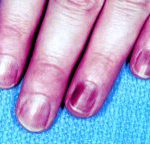Overall, omega-3 fatty acids (O3FA) are thought to be an important and beneficial part of our diet. Recently, the Journal of Neurosurgery published an online paper that looked at the potential benefits of fish oil supplementation on recovery from brain injury.
Originally, axonal damage from TBI was thought to occur at the time of impact. Recent research has shown that the injury is really a progressive event that leads to swelling and axon disconnection during the hours to days after the initial injury. Building on a few animal studies over the past 6 years, a project to look at the effect of omega-3 fatty acid supplementation on brain injury was developed.
The authors performed a controlled study in rats, comparing supplementation with 10 or 40 mg/kg/day of O3FA for 30 days after brain injury with no supplementation. After 30 days, the rats were sacrificed and their brains were examined. The investigators found that a chemical marker of axonal injury (beta amyloid precursor protein) was very significantly decreased in the supplemented animals. The decrease was fairly dramatic and was similar for both doses.
The actual mechanism by which the protective effect of O3FA was not determined in this study. There is speculation that it may be due to stabilization of brain cell membranes and reduction in the number of reactive oxygen molecules.
This research is very intriguing and appears to have been designed and executed well. The only downside to the work is that the senior investigator is the founder and trustee for the Inflammation Research Foundation. The foundation promotes research on the treatment of diseases with nutritional supplements such as fish oil. The Foundation provided the supplements used in this study. Readers must always be careful when interpreting positive data that is funded or supported by an organization that may benefit from positive results.
Bottom line: Interesting study, and certainly one that should be followed up with human studies. As far as we know, fish oil supplements are relatively safe, so it should be a little easier to move this work along to human studies. It is not sufficient to recommend adding O3FA to the nutritional regimen of head injured patients yet.
Reference: Omega-3 fatty acid supplementation and reduction of traumatic axonal injury in a rodent head injury model Laboratory investigation. Sears et al. J Neurosurg online July 16, 2010.

